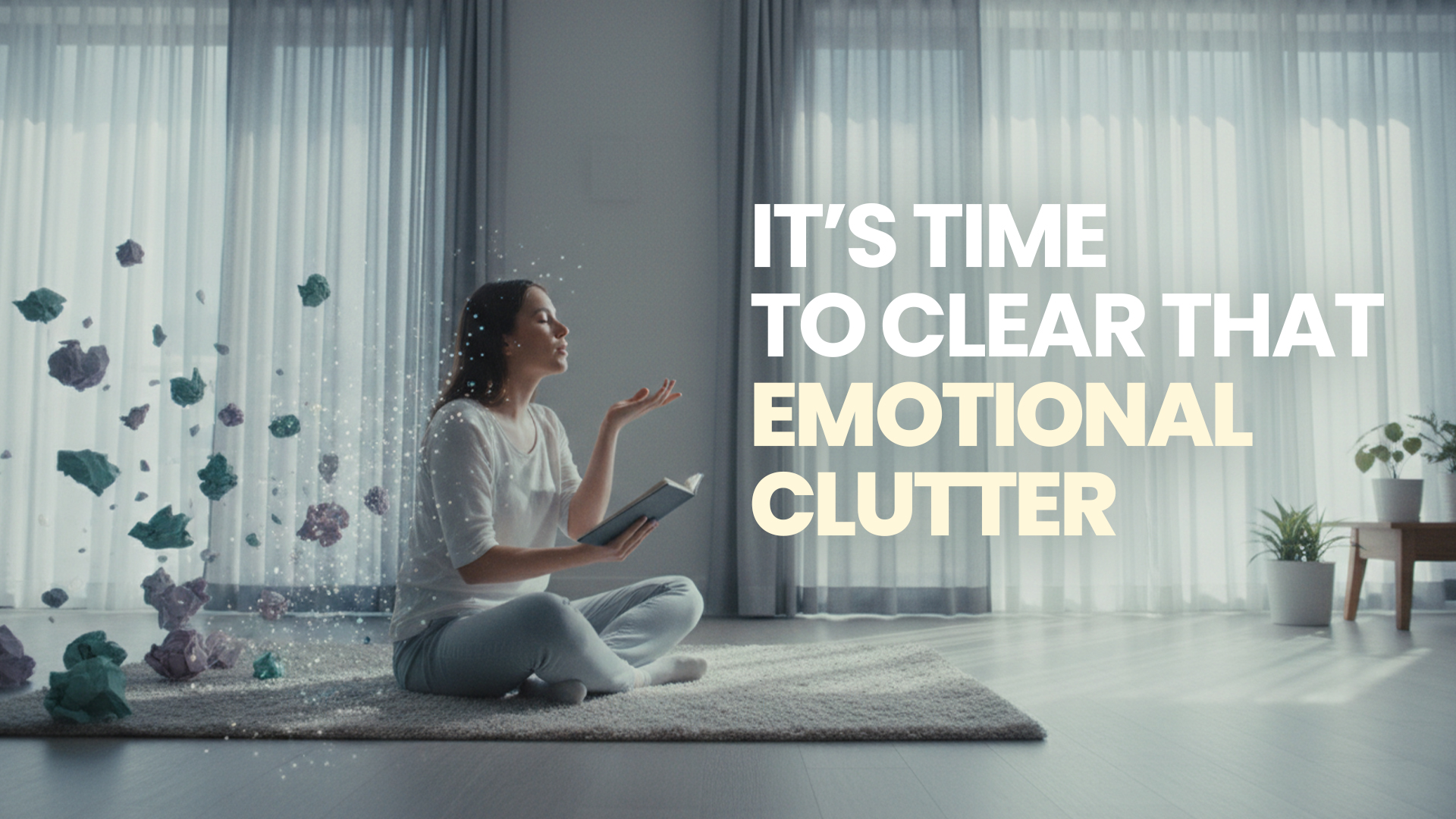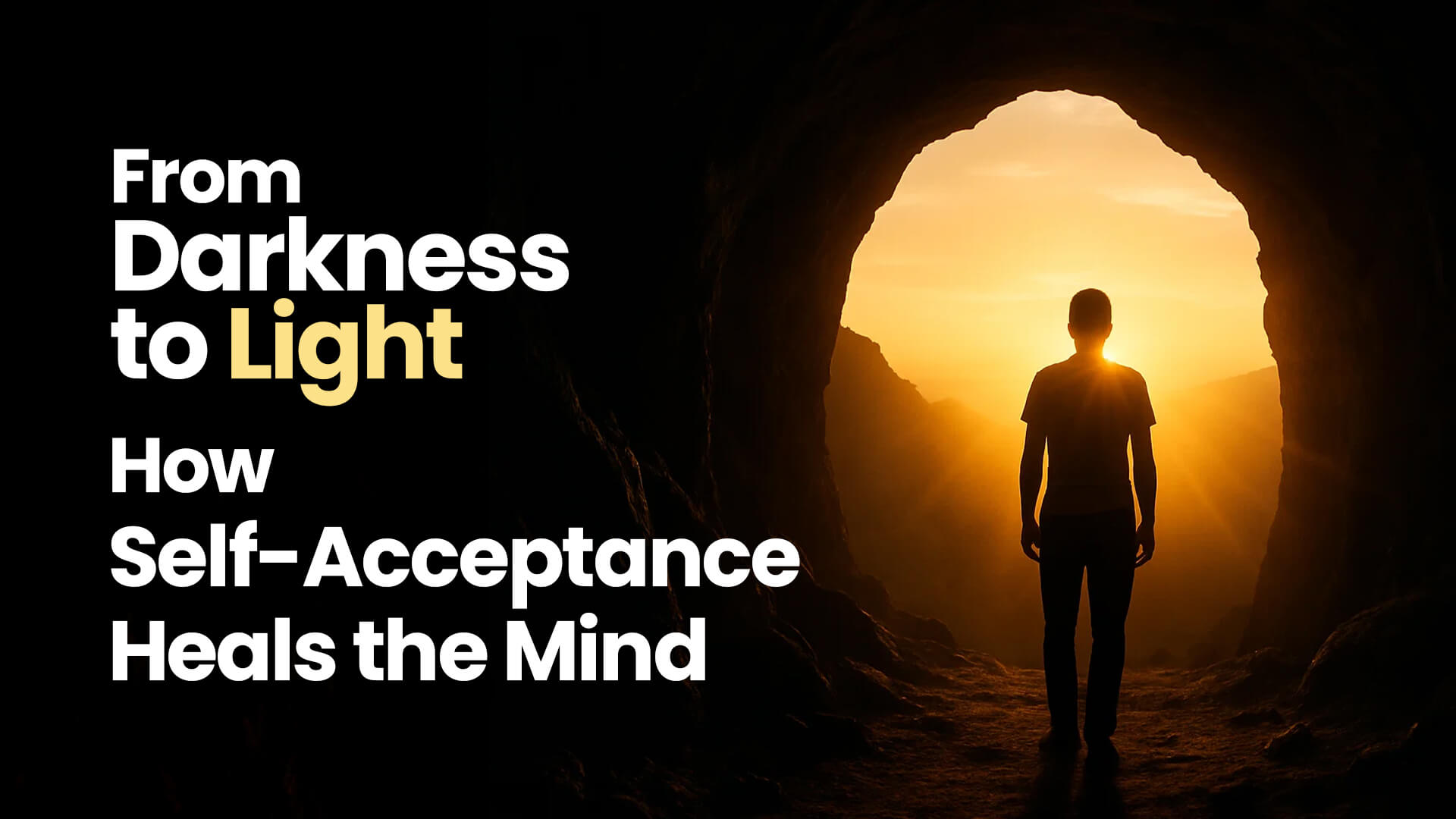We often talk about finding light, peace, or clarity. But what happens when there’s no space for it to enter? Emotional clutter, that is, unprocessed feelings, grudges, regrets, and self-criticism, blocks the very things we are seeking. Just as a room feels lighter when you remove unnecessary items, your inner world feels clearer when you release what weighs you down. You can’t truly welcome new beginnings while still holding on to emotional baggage. Clearing the clutter is the first step toward making room for light.
What Is Emotional Clutter?
Emotional clutter is the build-up of unacknowledged feelings and unresolved experiences. This hidden mess is just as draining as physical clutter. It fills your mental space, leaving little room for calm or clarity. It looks like:
- Carrying resentment toward people who hurt you.
- Replaying old mistakes in your mind.
- Holding onto guilt that no longer serves you.
- Staying loyal to limiting beliefs that shrink your potential.
- Filling your days with distractions to avoid discomfort.
How Emotional Clutter Affects You
- Lack of focus
- Low energy
- Strained relationships
- Self-doubt
Your mind drifts to the past or worries about the future.
Suppressing emotions takes effort, leaving you tired.
Unresolved feelings leak out as impatience or distance.
Old wounds whisper that you’re not enough.
Why Clearing Comes Before Welcoming
Many people try to think positively or invite peace without first clearing the weight. It rarely works. You can’t pour fresh water into a cup already full. Releasing old emotions creates the openness needed to experience genuine peace. Clearing is not about forgetting the past. It’s about choosing not to carry its burden anymore.
Practical Steps to Clear Emotional Clutter
- Name what’s heavy
- Challenge lingering beliefs
- Practice forgiveness
- Release through the body
- Limit mental junk
- Create space for silence
Write down the emotions or memories that keep returning. Naming them makes them less overwhelming.
Ask yourself if old stories like ‘I always fail’ or ‘I don’t deserve love’ are truly yours or inherited from past criticism.
Forgiveness doesn’t excuse harm. It frees you from reliving it. Begin with small steps, even if it’s simply saying, ‘I no longer want this to define me.’
Movement, breathwork, or simple stretching helps release emotions stored in the body. Clutter isn’t only mental; it’s physical tension too.
Reduce exposure to negativity, whether in conversations, media, or self-talk. Choose inputs that support calm.
Quiet moments, whether through meditation, sitting outdoors, or mindful breathing, allow buried emotions to surface and pass.
Everyday Micro-Practices
Clearing doesn’t always require deep sessions. It can be integrated into daily life:
- End the day by writing down one thing you’re ready to release.
- Pause when you feel triggered and name what emotion you notice.
- Take five deep breaths when your mind feels crowded.
- Thank yourself for progress, however small.
- These micro-practices slowly clear away layers of clutter.
The Benefits of Letting Go
When you release emotional clutter, you create space for new energy.
- Mental clarity
- Emotional freedom
- Better presence
- Improved relationships
- Openness to light
Thoughts feel lighter, more organized.
You’re no longer tied to holding grudges or guilt.
You live more in the moment instead of past regret or future fear.
You connect with people as they are now, not through the filter of old pain.
Space for joy, peace, and creativity naturally emerges.
Letting go doesn’t mean erasing your story. It means choosing which parts to carry forward.
A Simple Reflection Exercise
- What emotions or memories take up most of my mental space?
- What is one belief I’ve outgrown but still hold on to?
- What would change in my life if I let go of it?
Reflecting on these questions shines a light on the clutter you may not realize you’re carrying.
Making Space for the Light
Once you release what’s heavy, you don’t need to chase light; it flows naturally. Peace, joy, and clarity are already within you. Clearing simply removes what blocks them. You don’t have to do it all at once. Each minor release creates more room for light to enter. Over time, you notice you feel calmer, lighter, and more connected to yourself.
Frequently Asked Questions
Q1. How do I know if I’m carrying emotional clutter?
If old memories or feelings keep resurfacing, drain your energy, or influence your choices, that’s clutter.
Q2. Is clearing the same as forgetting?
No. Forgetting erases the memory. Clearing means accepting it happened but choosing not to carry the weight anymore.
Q3. Can emotional clutter affect physical health?
Yes. Suppressed emotions often show up as tension, fatigue, or even sleep issues.
Q4. How long does it take to clear emotional clutter?
It’s an ongoing process. Small daily practices build lasting change. You don’t need to finish clearing; you just need to begin.
Q5. What if I can’t let go on my own?
Seeking therapy, coaching, or healing support can help when the clutter feels too heavy to release alone.
Clearing emotional clutter is not about erasing your past. It’s about lighting your present so you can welcome what’s ahead. Every time you release a memory, a belief, or a weight that no longer serves you, you make space for peace and clarity. The light doesn’t need to be invited; it’s always waiting once the clutter is gone.
Reach Dr. Chandni’s support team at +918800006786 and book an appointment.









